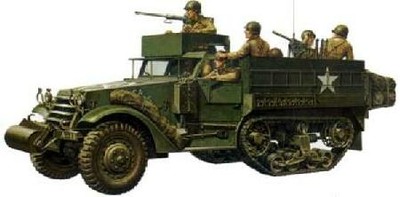3rd AD Maintenance Bn
3d Armored Division Maintenance Battalion

"Oxygen"
Brief History
ARMORED MAINTENANCE BN "Oxygen"
The 3rd Armored Maintenance Battalion was one good reason why the "Spearhead" Division kept rolling when, by all the laws of machinery, it should have been halted for overhaul. During the long rat race across France and Belgium in the rapid summer offensive of 1944, the maintenance crews worked furiously while on the move. They welded and brazed the broken armor, Improvised when material was scarce, cannibalized other vehicles on the battlefield; begged, borrowed, and actually stole the necessities which kept their charges rumbling forward against the enemy. How well that task was accomplished is all in the record: it's in the brave story of the long, grueling drives, the miracle of supply, the smash into and through the Siegfried Line of Germany early in September, 1944.
The 3rd Armored Division's Maintenance Battalion was activated at Camp Polk, Louisiana, during the reorganization of armored forces on January 1, 1942. Its components. were the, 18th Ordnance Battalion an4 Company "B" of the 15th Quartermaster, both charter members of the "Spearhead" Division. Lt. Colonel William B. Namby was the first commanding officer. The battalion trained with its parent unit at Camp Polk, Louisiana; Desert- Center, California; Camp Pickett, Virginia; and Indiantown Gap, Pennsylvania, before sailing for overseas service early in September, 1943. In England, the battalion was stationed at Codford St. Mary, Wiltshire, and maneuvered over Salisbury Plain during pre-invasion months.
After thorough training, the Maintenance Battalion supervised waterproofing of all the division's vehicles before embarkation for France. Under Lt. Colonel Joseph L. Cowhey the battalion went ashore in Normandy, on July 4, 1944, and was immediately given a problem to solve: that of producing a suitable hedge-cutting arrangement to lit on the division's medium tanks. After a few days of experimentation, a double plow chopper, designed. by the armored engineers, was evolved, in one week, 100 of these gadgets were fitted to tanks. The materials used were I-beams and boilerplate salvaged from blown bridges and buildings. Two hundred of the choppers were ultimately installed and used to good effect in the bocage country.
Lt. Colonel Rager J. McCarthy assumed command of the battalion on August 29, 1944, and led the unit throughout the rest of the western campaign.
During bitter attrition on the western front near Stolberg, Germany, the battalion's personnel worked night and day under vicious shellfire in order to repair the, numerous "Spearhead" tanks which had been damaged .in action. The magic of the maintenance crews returned vehicles to duty within short hours of retrieval.
Aside from swift repair on division combat vehicles, the Maintenance Battalion aided the mammoth task of. Supply. Nine M-25 tank transporters, the largest Wheeled vehicles in the army, carried extra equipment, gasoline, and ammunition for the "Spearhead." As if this were not enough, Colonel McCarthy's men volunteered, at one time, to give their blood for the Wounded. That was, after all, a typical gesture from the men who bad adopted as their own, the slogan: "We do the difficult Immediately: the' Impossible takes a little longer"
![]()
